
Philately is the study of postage stamps and postal history. It also refers to the collection and appreciation of stamps and other philatelic products. Philately involves more than just stamp collecting or the study of postage; it is possible to be a philatelist without owning any stamps. For instance, the stamps being studied may be very rare or reside only in museums.

The economy of Vatican City is supported financially by the sale of stamps, coins, medals, and tourist mementos as well as fees for admission to museums and publication sales. Vatican City employed 4,822 people in 2016.

A cancellation is a postal marking applied on a postage stamp or postal stationery to deface the stamp and to prevent its reuse. Cancellations come in a huge variety of designs, shapes, sizes, and colors. Modern cancellations commonly include the date and post office location where the stamps were mailed, in addition to lines or bars designed to cover the stamp itself. The term "postmark" refers specifically to the part that contains the date and posting location, but the term is often used interchangeably with "cancellation" as it may serve that purpose. The portion of a cancellation that is designed to deface the stamp and does not contain writing is also called the "obliteration" or killer. Some stamps are issued pre-cancelled with a printed or stamped cancellation and do not need to have a cancellation added. Cancellations can affect the value of stamps to collectors, positively or negatively. Cancellations of some countries have been extensively studied by philatelists, and many stamp collectors and postal history collectors collect cancellations in addition to the stamps themselves.
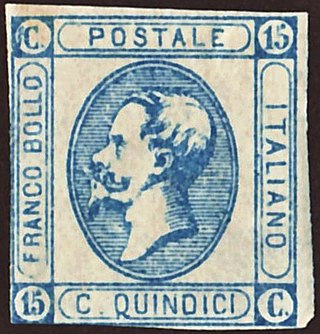
This is an introduction to the postal and philatelic history of Italy.
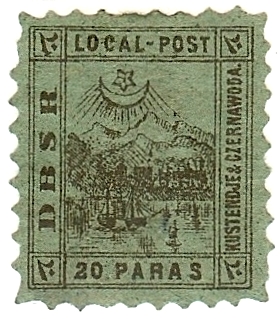
A local post is a mail service that operates only within a limited geographical area, typically a city or a single transportation route. Historically, some local posts have been operated by governments, while others, known as private local posts have been for-profit companies. Today, many stamp collectors operate hobbyists' local posts, issuing their own postal stamps known as "locals" or "cinderellas" for other collectors but rarely carrying any mail.
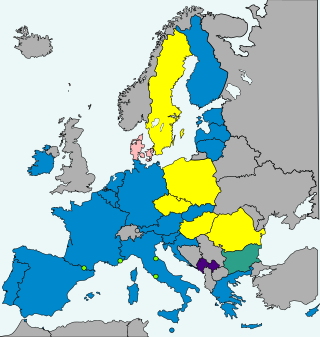
Vatican euro coins are issued by the Philatelic and Numismatic Office of the Vatican City State and minted by Istituto Poligrafico e Zecca dello Stato (IPZS), in Rome, Italy. The euro is the official currency of the Vatican City, although Vatican City is not a member of the Eurozone or the European Union. The euro has been the official currency of Vatican City since 2002. Before that, the Vatican lira was the official currency.

The Mauritius "Post Office" stamps were issued by the British Colony Mauritius in September 1847, in two denominations: an orange-red one penny (1d) and a deep blue two pence (2d). Their name comes from the wording on the stamps reading "Post Office", which was soon changed in the next issue to "Post Paid". They are among the rarest postage stamps in the world.

The Vatican post office has operated its own postal service and issued its own postage stamps since 1929.

The lira was the currency of the Vatican City between 1929 and 2002. It was not a separate currency but an issue of the Italian lira; the Banca d'Italia produced coins specifically for Vatican City.

The story of the postage stamps and postal history of Yugoslavia officially begins with the formation of the Kingdom of Serbs, Croats and Slovenes on 1 December 1918.

The postal history of Malta began in the early modern period, when pre-adhesive mail was delivered to foreign destinations by privately owned ships for a fee. The earliest known letter from Malta, sent during the rule of the Order of St John, is dated 1532. The first formal postal service on the islands was established by the Order in 1708, with the post office being located at the Casa del Commun Tesoro in Valletta. The first postal markings on mail appeared later on in the 18th century.
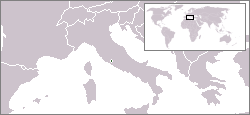
The Vatican City, even though not a member of the European Union, became a member of the Eurozone. Since 2002 it has had a special agreement with the EU that allows this microstate to mint a limited number of euro coins. This article is specifically about the euro gold and silver commemorative coins of the Vatican City and does not cover the pre-euro commemorative coins.
Between 1851 and 1860, the Grand Duchy of Tuscany, an independent Italian state until 1859 when it joined the United Provinces of Central Italy, produced two postage stamp issues which are among the most prized classic stamp issues of the world, and include the most valuable Italian stamp.

The postal history of Monaco can be traced to the principality's first postmark in 1704. Stampless covers are known with both manuscript and handstamp postmarks for Monaco and Fort d'Hercule ; as the principality was once much larger, postmarks of the communes of Menton and Roquebrune prior to their 1848 secession might also be included. Monaco used Sardinian stamps from 1851 until 1860, when by the Treaty of Turin, Sardinia ceded to France the surrounding county of Nice and relinquished its protectorate over Monaco; French stamps with Monaco or Monte-Carlo postmarks were used thereafter. Two forms of cancellation are known for the French period. With the first, the postmark is on the cover away from the stamps; an obliterator with an identifying post office number 4222, or later 2387, inside a diamond of ink dots cancelled the actual stamps. The second applied the postmark directly on the stamps, as both a date stamp and cancel. All of these postal forerunners, particularly usages of Sardinian stamps with Monaco cancels, are far more valuable than the same stamps postally used in the issuing countries.

The postal history of San Marino can be traced to October 7, 1607, with the introduction of public postal services. The republic's postal needs were handled by a post office in nearby Rimini, Italy; the first San Marino post office opened in 1833.

This is an article about the postage stamps and postal history of the Sovereign Military Order of Malta.
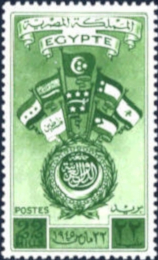
This is a survey of the postage stamps and postal history of Egypt.

Poste Vaticane is an organization responsible for postal service in Vatican City. The organization is part of the Post and Telegraphy Service.
Events in the year 1929 in Vatican City.
















